"New" engine
#1
New to me, anyway.
I'v been shopping for a few months without finding what I wanted. I'd love to have an LS3, but used prices are not that much less than new. And I really didn't want to spend that much initially. After shopping in a variety of places, I purchased this one through e-bay.
Came out of a 2001 pontiac firebird with 88K miles. Already has the LS6 intake, so that's a small bonus. Appears to be in pretty good shape. The clutch looks like it's been replaced in recent years, so I might just use that again.
I paid an extra $50 for a lift gate delivery to my house. Well worth it, IMO.
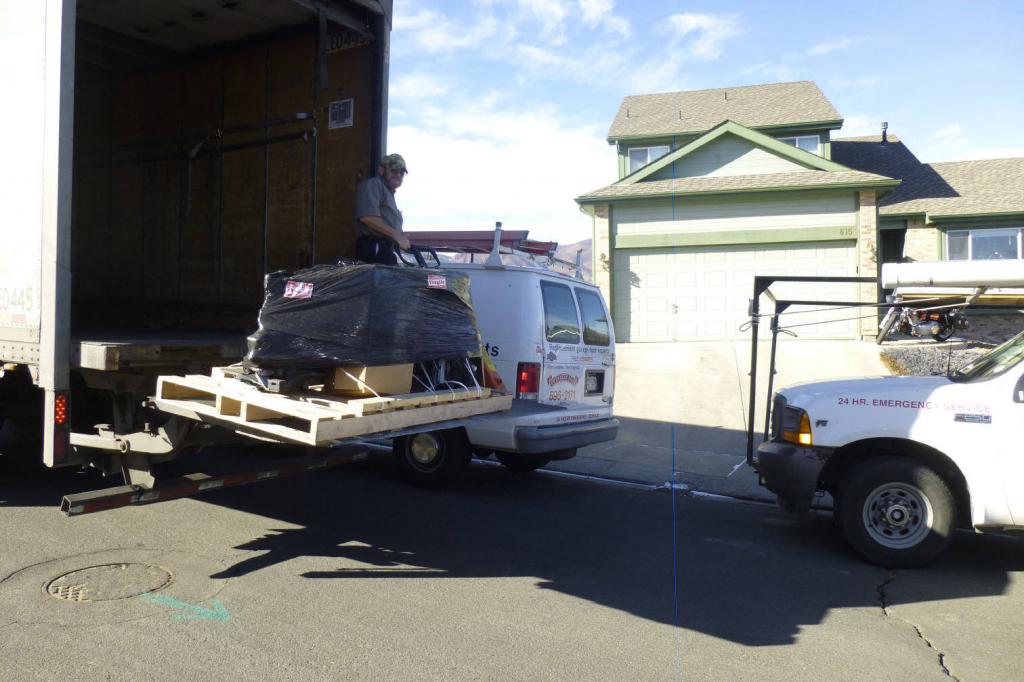
Since the garage guys were still hard at work, I parked the palate out in the driveway for a while.
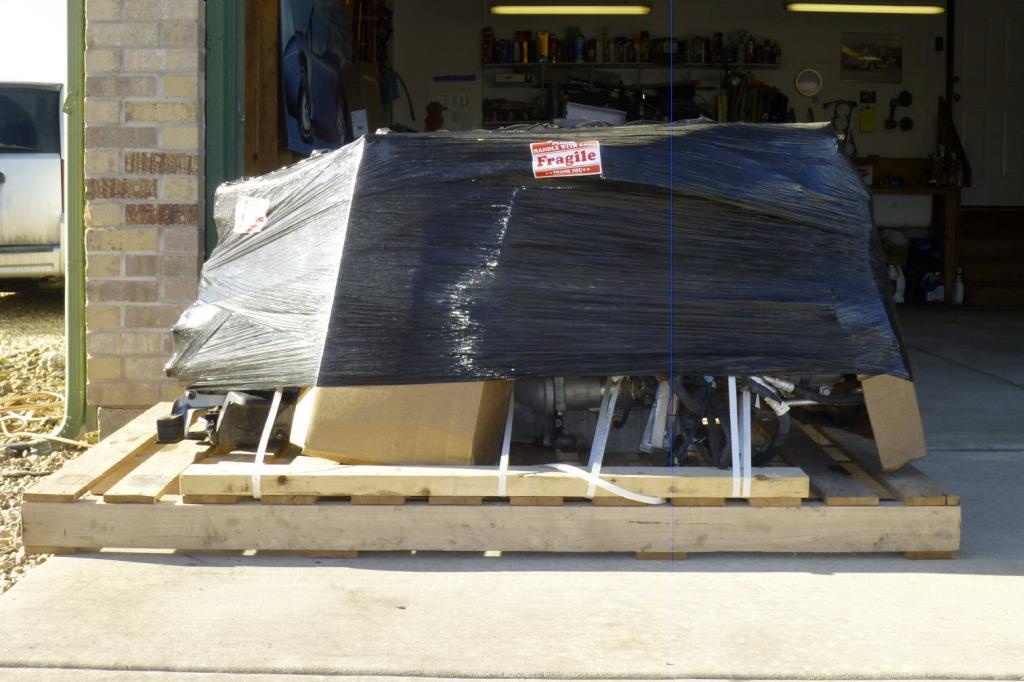
Unwrapping was like another Christmas
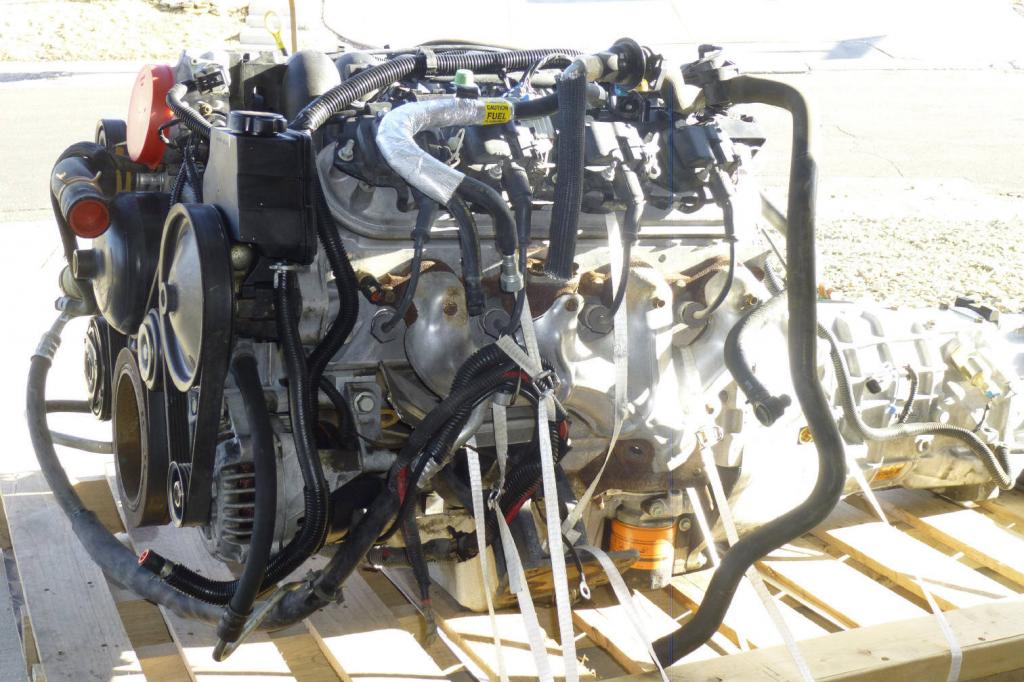
It took a little bit of work, but my son helped me get it up on a stand
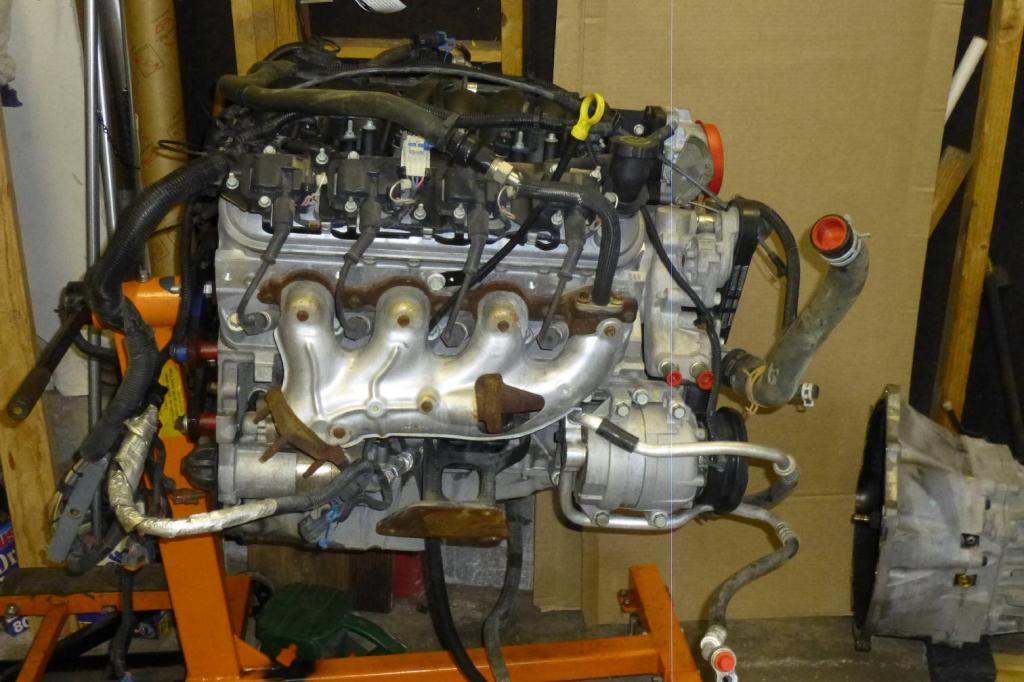
I have not had time to really tear in to the motor. But the plugs look good, and a bore scope into the cylinders looks good.
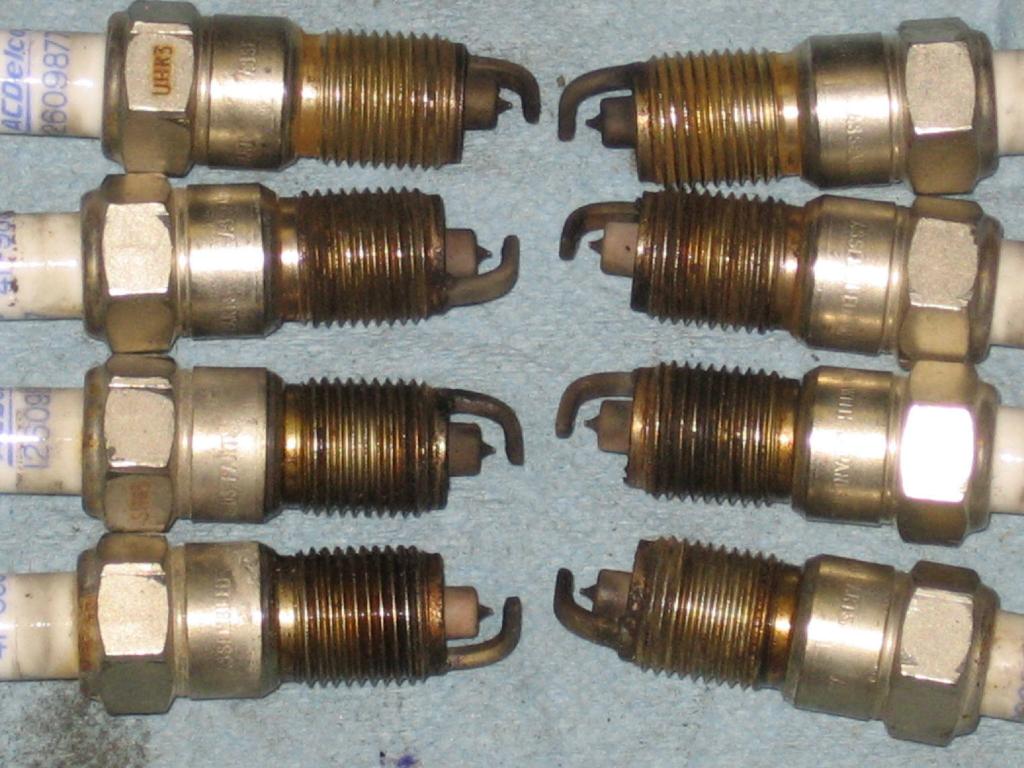
There is some oil in the intake manifold, though.
No real big plans for the engine. Yet. I'll overhaul the engine with new rings, bearings, gaskets, oil pump, etc. I want to build in reliability right from the start, but not get too crazy about it. I'll spend the first 2-3 seasons getting the suspension right, and learning to drive the car. Then I can think about a serious racing engine.
I picked up a set of ported PRC 5.3l heads for cheap. They're milled to 58cc, and that should bump the static compression to about 11:1. At high altitude and burning e85, that should be about right.
The cam will be something like the Texas Speed 224R, along with matching beehive springs.
I'll use the stock GM rocker arms. But do the CC trunion upgrade. Once again, reliability is the key. I don't want to have to touch the engine for at least two seasons, preferably 3.
This is fun. I love building engines.
I'v been shopping for a few months without finding what I wanted. I'd love to have an LS3, but used prices are not that much less than new. And I really didn't want to spend that much initially. After shopping in a variety of places, I purchased this one through e-bay.
Came out of a 2001 pontiac firebird with 88K miles. Already has the LS6 intake, so that's a small bonus. Appears to be in pretty good shape. The clutch looks like it's been replaced in recent years, so I might just use that again.
I paid an extra $50 for a lift gate delivery to my house. Well worth it, IMO.

Since the garage guys were still hard at work, I parked the palate out in the driveway for a while.

Unwrapping was like another Christmas


It took a little bit of work, but my son helped me get it up on a stand

I have not had time to really tear in to the motor. But the plugs look good, and a bore scope into the cylinders looks good.

There is some oil in the intake manifold, though.
No real big plans for the engine. Yet. I'll overhaul the engine with new rings, bearings, gaskets, oil pump, etc. I want to build in reliability right from the start, but not get too crazy about it. I'll spend the first 2-3 seasons getting the suspension right, and learning to drive the car. Then I can think about a serious racing engine.
I picked up a set of ported PRC 5.3l heads for cheap. They're milled to 58cc, and that should bump the static compression to about 11:1. At high altitude and burning e85, that should be about right.
The cam will be something like the Texas Speed 224R, along with matching beehive springs.
I'll use the stock GM rocker arms. But do the CC trunion upgrade. Once again, reliability is the key. I don't want to have to touch the engine for at least two seasons, preferably 3.
This is fun. I love building engines.

#2
Nice! I'm not a big fan of symmetrical cams but if you go with that one I'd go with the 112 LSA version of it to bring the power band down. 110 would be better to reduce the 4000 rpm stab in the back though.
#4
Exactly why a flat predictable power band is a good thing. Have you considered an ASA cam? Probably the best tq curve on the market for an LS1 and super easy on the valve train... especially with shaved heads.
#5
Like every one else, I want to make power. BUT, I want that power in the mid and upper ranges. I don't care about idle quality or low speed performance.
But then I picked up these shaved and ported heads by Texas Speed. I talked with Derrick, and he recommended their 224R cam. If I do that, I'll have it ground on a 114* LSA for the top end power.
I'm also considering Howards Cams version of the ASA cam. It has slightly more duration, but less lift than TSI. Here's the data I have:
GMPP ASA- 226/236, .525/.525", 110* LSA
TS&P 224R- 224/224, .581/.581", 114*LSA
Howards- 226/238, .525/.525", 113* LSA
I haven't cruised the Comp Cams catalog yet.
In the end, though, I think performance will be pretty close to the same between the three. But I like the wider LSA of the TS&P.
I guess I'll have to spend some time with Desk Top Dyno and see what the differences are.
#6
LOL yeah that desk top dyno is fun to play with! From what I am reading GM keeps there lift low for longevity in the valve train and not changing valve springs or having them break on the track was more important than squeezing every last HP out of the engine for me.
Not sure where you got your specs but the Howards version of the ASA cam is the same specs of the GMPP ASA but with a slightly different ramp profile. They are both listed at 226i/236e .525" and 110 LSA. But you can see the profile difference in GMs advertised duration of 286i/300e and Howards at 274i/285e. So Howards ramps are a bit steeper but other than that they are the very same cam.
If you want tons of high end you might consider the next bump up in the GMPP line. The GMPP Stage 2 is 227i/239e .551" 108 LSA RPM range 2300 to 6700 Part# 88958722. I came very close to running that one but ended up with the Howards ASA due to an outstanding black Friday price. Well that and cam specs are just like salt on a steak. A little is good but alot is awful...
For what it is worth I am looking to go the opposite direction and bring my power band down some. Now I am running a Lunati 220i/224e .575" 112 LSA which is a nice mild street cam but the tq curve is a bit more track orientated. At 2500 it ignores you but at 4000 it kicks so hard it is hard to keep it pointed where you want it. I am hoping the ASA flattens that out a bit and it should give me a few more ponys accross the board. And yeah OK I know it’s lame but I am looking forward to the OMG nasty idle too…
If you are interested in that Lunati it's coming out in a couple of weeks and has about 7500 miles on it. It's pretty close to the specs you are looking at in the TSP cam.
Not sure where you got your specs but the Howards version of the ASA cam is the same specs of the GMPP ASA but with a slightly different ramp profile. They are both listed at 226i/236e .525" and 110 LSA. But you can see the profile difference in GMs advertised duration of 286i/300e and Howards at 274i/285e. So Howards ramps are a bit steeper but other than that they are the very same cam.
If you want tons of high end you might consider the next bump up in the GMPP line. The GMPP Stage 2 is 227i/239e .551" 108 LSA RPM range 2300 to 6700 Part# 88958722. I came very close to running that one but ended up with the Howards ASA due to an outstanding black Friday price. Well that and cam specs are just like salt on a steak. A little is good but alot is awful...
For what it is worth I am looking to go the opposite direction and bring my power band down some. Now I am running a Lunati 220i/224e .575" 112 LSA which is a nice mild street cam but the tq curve is a bit more track orientated. At 2500 it ignores you but at 4000 it kicks so hard it is hard to keep it pointed where you want it. I am hoping the ASA flattens that out a bit and it should give me a few more ponys accross the board. And yeah OK I know it’s lame but I am looking forward to the OMG nasty idle too…

If you are interested in that Lunati it's coming out in a couple of weeks and has about 7500 miles on it. It's pretty close to the specs you are looking at in the TSP cam.
Last edited by charchri4; 01-16-2014 at 09:56 AM.
#7
The specs for the Howards cam came right off their web site:
"197715-13 274 285 226 236 .525 .525 113
Same as #197715-10 w/wider separation for easier tunability & smoother power band."
At the moment, I'm leaning towards the Howards cam. I need a smooth flat torque curve for a very light weight car. The loss of power from the low lift will probably be offset by the more agressive ramp profile. Since the heads are shaved significantly, I can't use a whole lot of lift without flycutting the pistons.
That's the plan at the moment anyway. Cams are like wheels and body color - you change your mind often, even after you buy them.
"197715-13 274 285 226 236 .525 .525 113
Same as #197715-10 w/wider separation for easier tunability & smoother power band."
At the moment, I'm leaning towards the Howards cam. I need a smooth flat torque curve for a very light weight car. The loss of power from the low lift will probably be offset by the more agressive ramp profile. Since the heads are shaved significantly, I can't use a whole lot of lift without flycutting the pistons.
That's the plan at the moment anyway. Cams are like wheels and body color - you change your mind often, even after you buy them.

#9
Yes, you are correct. The listing for 197715-10 says something like , "Our version of the ASA cam". Or something like that. That cam (like the GMPP cam) has a 110* LSA. And that's good for a lot of reasons.
But the one just below that (197715-13) has the same specs, except a wider LSA, at 113*. And there are some good reasons for that, too. I like a wide LSA. You get the same performance in the upper rpm's. But with less overlap it makes a smoother transition into the power band.
A cam with a lot of duration and a close LSA will have a certain amount of overlap. If you have a lot of compression on pump gas, that will help bleed off pressure in the lower rpm's, and help prevent detonation. If you open up the LSA a few degrees, the overlap decreases, and the pressure rises. You tend to get a flatter/broader torque curve.
Thanks for the cam card, though. I can use that data in Desk Top Dyno. The intake valve closes at 39*, so it should build a lot of pressure.
But the one just below that (197715-13) has the same specs, except a wider LSA, at 113*. And there are some good reasons for that, too. I like a wide LSA. You get the same performance in the upper rpm's. But with less overlap it makes a smoother transition into the power band.
A cam with a lot of duration and a close LSA will have a certain amount of overlap. If you have a lot of compression on pump gas, that will help bleed off pressure in the lower rpm's, and help prevent detonation. If you open up the LSA a few degrees, the overlap decreases, and the pressure rises. You tend to get a flatter/broader torque curve.
Thanks for the cam card, though. I can use that data in Desk Top Dyno. The intake valve closes at 39*, so it should build a lot of pressure.
Last edited by .boB; 01-17-2014 at 08:42 PM.
#10
Wow Bob you sure about that? I know just enough to be dangerous on this but a flatter broader torque curve from a higher LSA is 180 from what I have read on the subject.
GMPP touts the benefits of the ASA (110LSA) over the Hot Cam (112LSA) as a less peaky torque curve at mid-range. I can't find the article now but it was either Car Craft or Hot Rod that did an LS cam review and one of them was the 228R 112 LSA vs the 228R 114 LSA. The 112 had a significant low and midrange difference and a flatter curve from top to bottom than the more focused 114 LSA did. But that was a box stock motor other than the cam so your situation is going to be different for sure.
Anyway I'm second guessing my decision to go lower LSA to flatten the tq curve now....
GMPP touts the benefits of the ASA (110LSA) over the Hot Cam (112LSA) as a less peaky torque curve at mid-range. I can't find the article now but it was either Car Craft or Hot Rod that did an LS cam review and one of them was the 228R 112 LSA vs the 228R 114 LSA. The 112 had a significant low and midrange difference and a flatter curve from top to bottom than the more focused 114 LSA did. But that was a box stock motor other than the cam so your situation is going to be different for sure.
Anyway I'm second guessing my decision to go lower LSA to flatten the tq curve now....
#11
Am I sure about that? Ha! I never really sure about anything. 
But, in theory, a cam with all the same specs except a wider LSA should move the power band up higher and give you a broader power band as well. The trade off is that you do tend to lose a little bit of peak power. But you have more power under the curve, more average power, and a car that's much easier to drive on a road course. Life's full of trade offs.
Because the LSA is wider, the intake closing point is a bit later. That bleeds off some cylinder pressure at low rpm's, which makes a high compression engine easier to live with on the street. You also get lower cranking pressure so it starts easier. The low RPM advantages are very small, because we're only dealing with a couple of degrees.
But, you get better high rpm cylinder filling, and more power up top. With less overlap you have less reversion into the intake track, and that tends to keep the torque curve flatter and wider.
The wider LSA cam is also a bit easier to tune with EFI and a dry manifold.
Keep in mind that we're talking about two cams that are not all that radical. The differences are there, but not huge.
As an example, this is the dyno graph for my SBF. The cam is pretty big, but not rediculous. The LSA is 114*. The Windsor SBF's don't respond as well to ultra wide LSA's (115*+) like the LSx's do. I don't know why that is.
On this graph, ignore the actual numbers, they really don't matter. But what is nice is the very flat torque "curve".
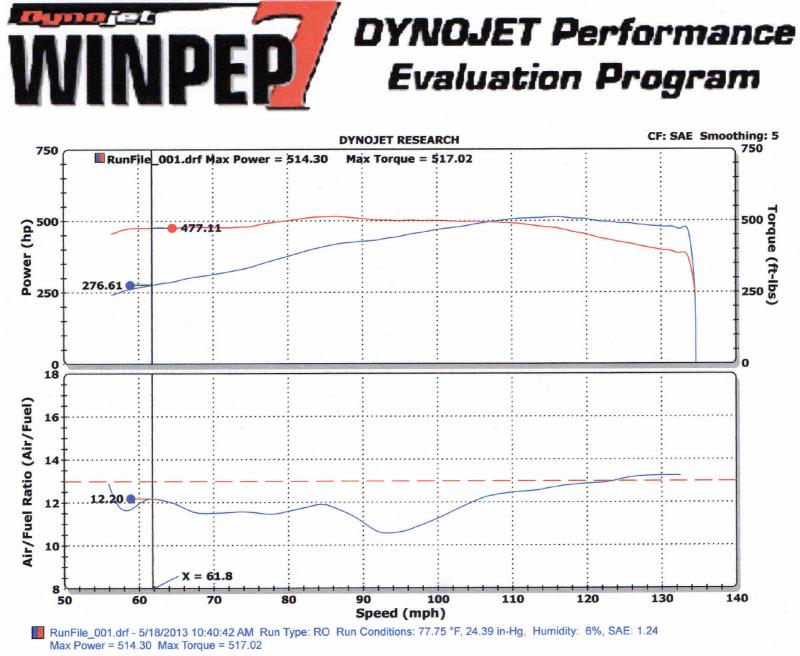
I can shift almost anywhere and still be fast. On every track we go to, I only use 3rd and 4th. The engine makes so much torque everywhere, that I don't have to wind it to the sky to get the power down. This is exactly the torque curve shape I'm shooting for with this LS1.

But, in theory, a cam with all the same specs except a wider LSA should move the power band up higher and give you a broader power band as well. The trade off is that you do tend to lose a little bit of peak power. But you have more power under the curve, more average power, and a car that's much easier to drive on a road course. Life's full of trade offs.
Because the LSA is wider, the intake closing point is a bit later. That bleeds off some cylinder pressure at low rpm's, which makes a high compression engine easier to live with on the street. You also get lower cranking pressure so it starts easier. The low RPM advantages are very small, because we're only dealing with a couple of degrees.
But, you get better high rpm cylinder filling, and more power up top. With less overlap you have less reversion into the intake track, and that tends to keep the torque curve flatter and wider.
The wider LSA cam is also a bit easier to tune with EFI and a dry manifold.
Keep in mind that we're talking about two cams that are not all that radical. The differences are there, but not huge.
As an example, this is the dyno graph for my SBF. The cam is pretty big, but not rediculous. The LSA is 114*. The Windsor SBF's don't respond as well to ultra wide LSA's (115*+) like the LSx's do. I don't know why that is.
On this graph, ignore the actual numbers, they really don't matter. But what is nice is the very flat torque "curve".

I can shift almost anywhere and still be fast. On every track we go to, I only use 3rd and 4th. The engine makes so much torque everywhere, that I don't have to wind it to the sky to get the power down. This is exactly the torque curve shape I'm shooting for with this LS1.
Last edited by .boB; 01-17-2014 at 08:53 PM.
Thread
Thread Starter
Forum
Replies
Last Post
Braineack
DIY How-to Instructions
19
04-07-2017 11:22 AM
Currently Active Users Viewing This Thread: 1 (0 members and 1 guests)









